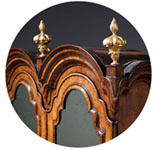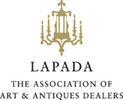A 17th-Century William and Mary eight-day table clock by Isaac Lowndes, 1695
£26,900
Follow Us
A 17th-Century William and Mary eight-day table clock by Isaac Lowndes, 1695
A fine William and Mary eight-day spring-driven table clock signed on the backplate, Isaac Lowndes Pallmall Court, c.1695.
The elegantly proportioned ebony-veneered oak domed top case has large rectangular viewing windows to the sides so that the movement is almost entirely visible. The front door is embellished by large pierced repoussé strips, the left one being an elaborate escutcheon. The dome is also adorned by a pierced ornament, which, together with the pierced ebony strip at the top rail of the front door functions as a sound fret. The case rests on four brass bun feet.
The fine square brass dial has a matted centre and delicately ringed winding holes. There is a date aperture below and a strike/silent lever above the XII, unusually flanked by the name of the maker: Isaac Lowndes. This is matched by the engraving at the bottom of the dial: London. The dial has an applied silvered chapter ring and winged cherub-head spandrels in the corners. The chapter ring is engraved with a narrow outer minute ring within which are Arabic five-minute numerals, a central ring with Roman hours I-XII and ornate half-hour markers and an inner ring divided into quarter hours. The time is indicated by an elegant pair of pierced period blued steel hands.
The striking eight-day twin fusee five pillar brass movement has a verge escapement with a short knife-suspended pendulum. The striking, which is regulated by an internal rack, indicates the hours fully on a bell. The backplate is profusely engraved in period style around a typical signature cartouche with the maker’s name: Isaac Lowndes Pallmall Court. The movement has pull-quarter repeat on three bells differing in pitch for the quarters and an additional bell for the hours.
The maker
Isaac Lowndes was born in Knutsford, Cheshire, in 1660. He was made free of the Clockmakers’ Company in 1682. He married Ann Wally in 1687. He took several apprentices and in 1694 lived on the south side of Pall Mall in St James’s Parish, separately from the other members of the Lowndes family, Jonathan and Charles. He was last mentioned in 1702.
Condition
Good. Wear consistent with age and use.
Dimensions
Height: 13.39 in (34 cm)
Width: 10.44 in (26.5 cm)
Depth: 6.89 in (17.5 cm)
Literature
B. Loomes, The Clockmakers of Great Britain 1286-1700, Ashbourne, 2014, p.327.
B. Loomes, Watchmakers and clockmakers of the World, London, 2006, p.495.
PREVIOUSLY SOLD
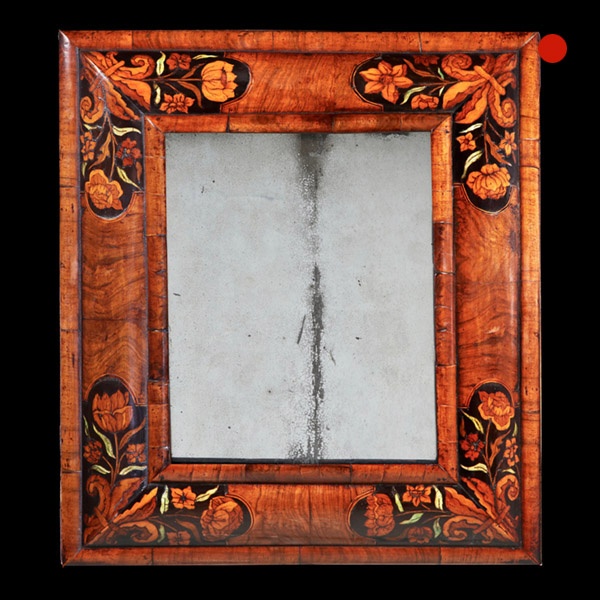
17th Century William and Mary Figured Walnut Marquetry Cushion Mirror
17th Century William and Mary Figured Walnut Marquetry Cushion Mirror SOLD Follow Us17th Century William and Mary Figured Walnut Marquetry Cushion Mirror From the restoration of the British Monarchy (1670-1685) we bring to you this charming...
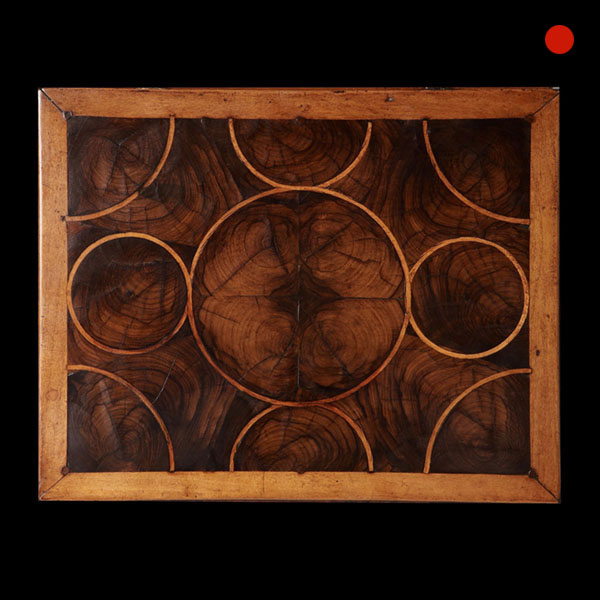
William and Mary Olive Oyster Lace Box
Fabulous 17th-century olive oyster ‘lace box’. ‘Lace boxes’ were popular amongst the middle and higher classes of society from C.1660-1700. The olive oyster box we have for offer here is a lovely original and unusually small example, at just 12″ wide. This form dates from circa 1680-1700.
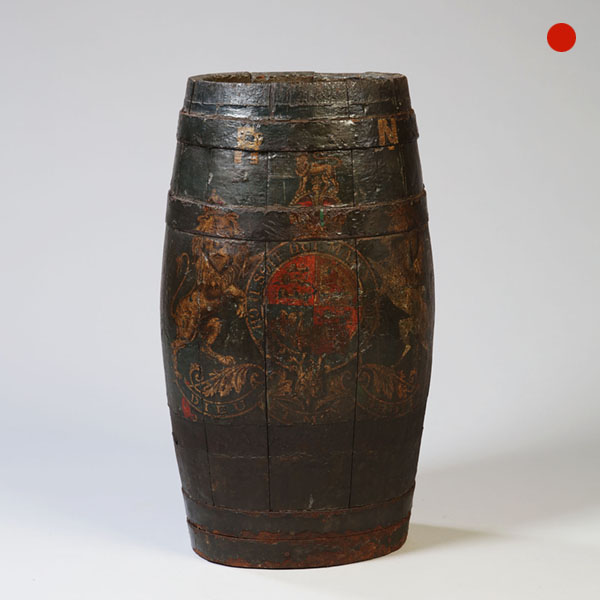
18th-Century Royal Navy Decorated Barrel
A rare 18th-century Royal Navy oak grog or powder barrel, lacquered and decorated with the Royal Coat of Arms. Super piece and makes a fantastic and atmospheric stick/cane stand.
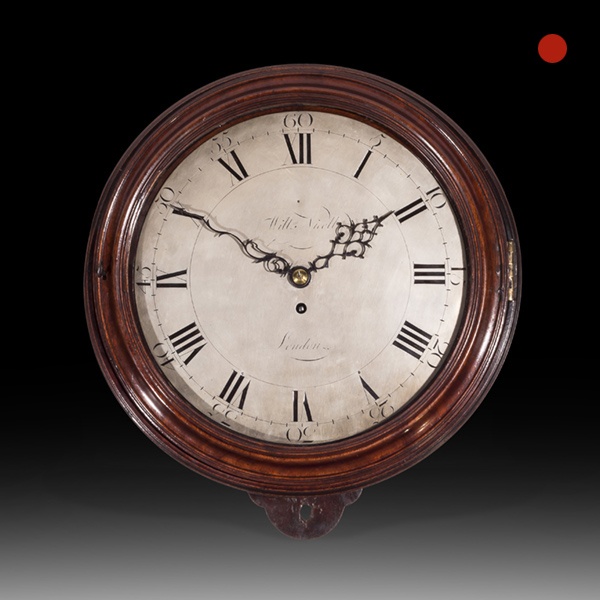
Large Mahogany 18th-Century Dial Clock, William Nicoll, London
The solid mahogany case has a moulded mahogany glazed door, which can be locked on the left-hand side. The original rectangular saltbox is permanently attached to the front and has doors to the side and the bottom.
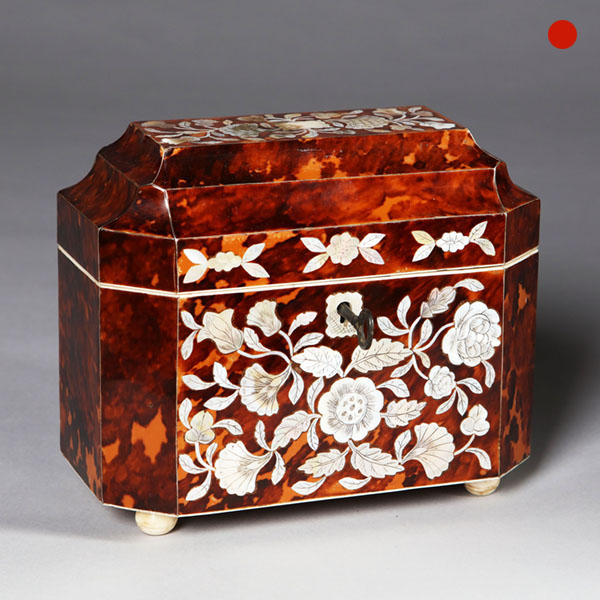
William IV Mother of Pearl Inlaid Tortoiseshell Tea Caddy
William IV Mother of Pearl Inlaid Tortoiseshell Tea Caddy 1800 England SOLDFollow UsWilliam IV Mother of Pearl Inlaid Tortoiseshell Tea Caddy A fine William IV mother of pearl inlaid tortoiseshell tea caddy. The term ‘caddy’ is believed to...
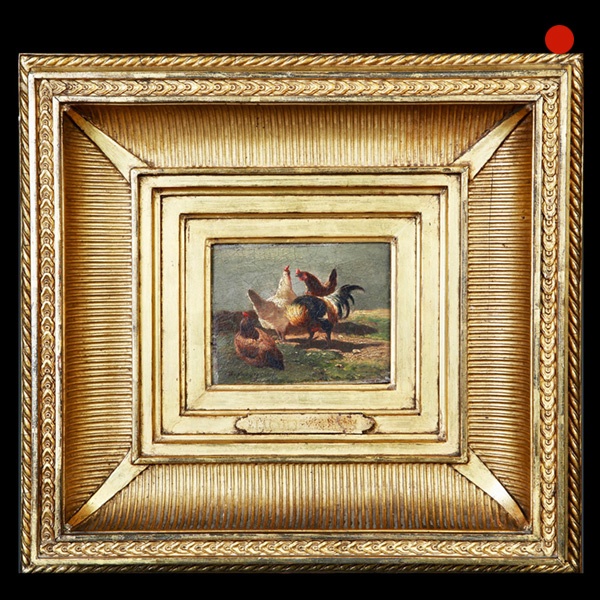
19th-Century Study of a Cockerel and Three Hens Oil Painting on Walnut Panel Charles Emile Jacque (1813-1894)
19th-Century Study of a Cockerel and Three Hens Oil Painting on Walnut Panel Charles Emile Jacque (1813-1894) 1813 to 1894 England SOLDFollow Us19th-Century Study of a Cockerel and Three Hens Oil Painting on Walnut Panel Charles Emile Jacque...

17th Century William and Mary Figured Walnut Marquetry Cushion Mirror
17th Century William and Mary Figured Walnut Marquetry Cushion Mirror SOLD Follow Us17th Century William and Mary Figured Walnut Marquetry Cushion Mirror From the restoration of the British Monarchy (1670-1685) we bring to you this charming...

William and Mary Olive Oyster Lace Box
Fabulous 17th-century olive oyster ‘lace box’. ‘Lace boxes’ were popular amongst the middle and higher classes of society from C.1660-1700. The olive oyster box we have for offer here is a lovely original and unusually small example, at just 12″ wide. This form dates from circa 1680-1700.

18th-Century Royal Navy Decorated Barrel
A rare 18th-century Royal Navy oak grog or powder barrel, lacquered and decorated with the Royal Coat of Arms. Super piece and makes a fantastic and atmospheric stick/cane stand.

Large Mahogany 18th-Century Dial Clock, William Nicoll, London
The solid mahogany case has a moulded mahogany glazed door, which can be locked on the left-hand side. The original rectangular saltbox is permanently attached to the front and has doors to the side and the bottom.

William IV Mother of Pearl Inlaid Tortoiseshell Tea Caddy
William IV Mother of Pearl Inlaid Tortoiseshell Tea Caddy 1800 England SOLDFollow UsWilliam IV Mother of Pearl Inlaid Tortoiseshell Tea Caddy A fine William IV mother of pearl inlaid tortoiseshell tea caddy. The term ‘caddy’ is believed to...

19th-Century Study of a Cockerel and Three Hens Oil Painting on Walnut Panel Charles Emile Jacque (1813-1894)
19th-Century Study of a Cockerel and Three Hens Oil Painting on Walnut Panel Charles Emile Jacque (1813-1894) 1813 to 1894 England SOLDFollow Us19th-Century Study of a Cockerel and Three Hens Oil Painting on Walnut Panel Charles Emile Jacque...
YOU MAY ALSO LIKE
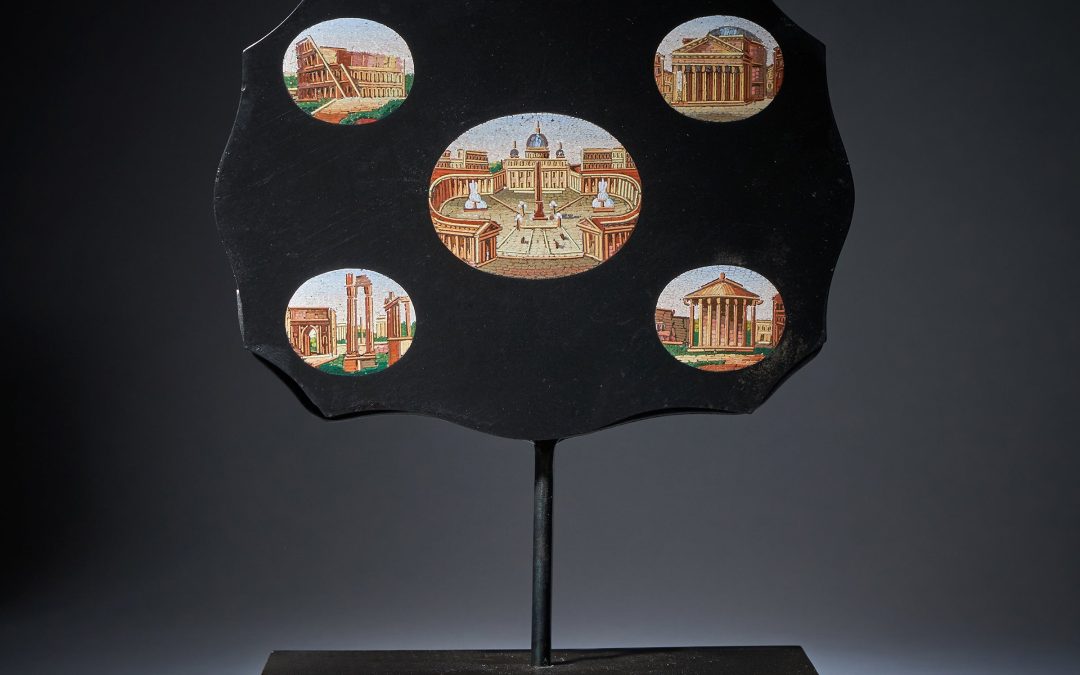
19th Century Grand Tour Micro Mosaic Tablet Depicting Italian Architecture
19th Century Grand Tour Micro Mosaic Tablet Depicting Italian Architecture £3,650Follow Us19th Century Grand Tour Micro Mosaic Tablet Depicting Italian Architecture A fine mid-19th century serpentine grand tour micro mosaic tablet or...
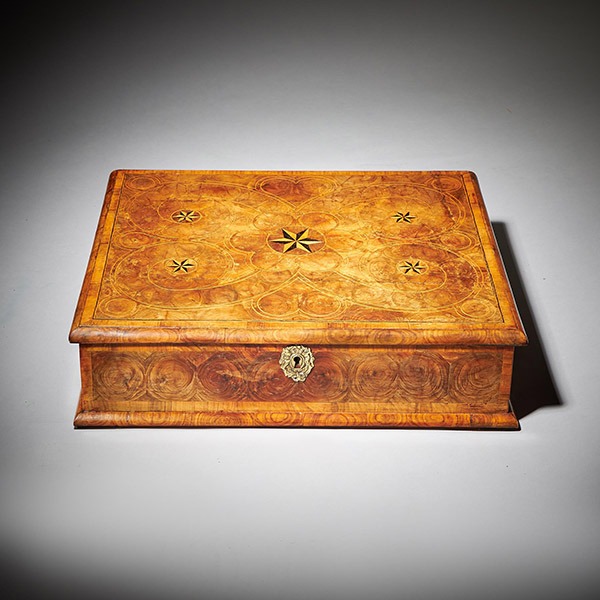
Large William and Mary 17th Century Inlaid Olive Oyster Lace Box, Circa 1690
Large William and Mary 17th Century Inlaid Olive Oyster Lace Box £5,500[wpforms_selector form_id="11387" show_title="on" _builder_version="4.22.1" _module_preset="default" custom_margin="-30px||||false|false" global_colors_info="{}"...
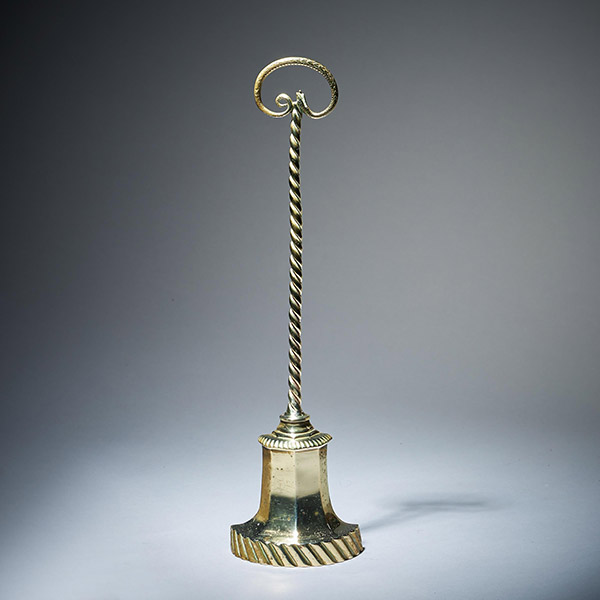
Early 19th Century High Regency Brass Snake Doorstop
Early 19th Century High Regency Brass Snake Doorstop £1,100Follow UsEarly 19th Century High Regency Brass Snake Doorstop A high Regency solid brass bell-shaped doorstop with snake handle, from the reign of George IV, Circa 1770. England The...
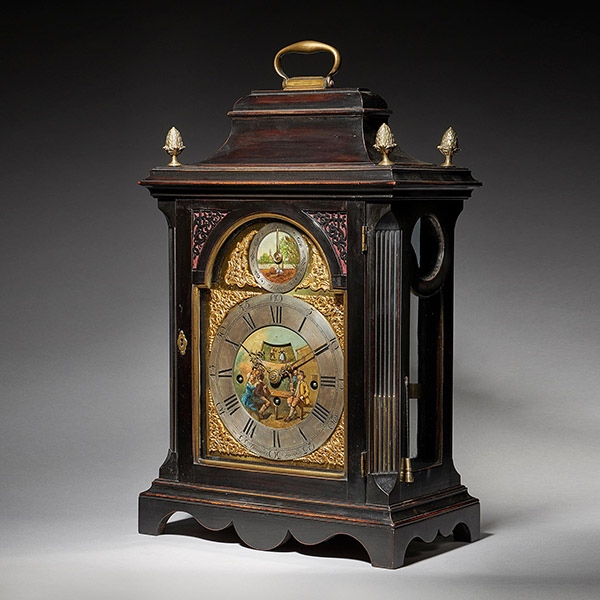
Extremely Rare George III 18th Century Quarter-Striking Bracket Clock, Signed
Extremely Rare George III 18th Century Quarter-Striking Bracket Clock, Signed Follow UsExtremely Rare George III 18th Century Quarter-Striking Bracket Clock, Signed An extremely rare George III 18th century ebonized quarter-striking bracket...
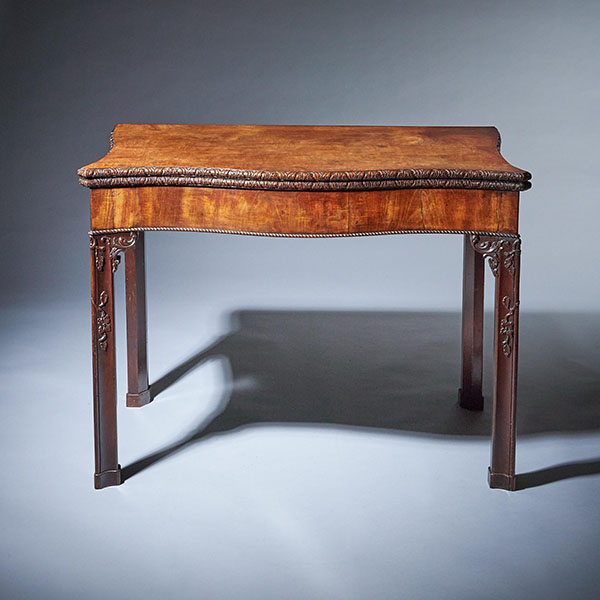
18th Century George III Carved Mahogany Serpentine Concertina Action Card Table
18th Century George III Carved Mahogany Serpentine Concertina Action Card Table £19,800Follow Us18th Century George III Carved Mahogany Serpentine Concertina Action Card Table A bold and impressive George III carved mahogany serpentine...
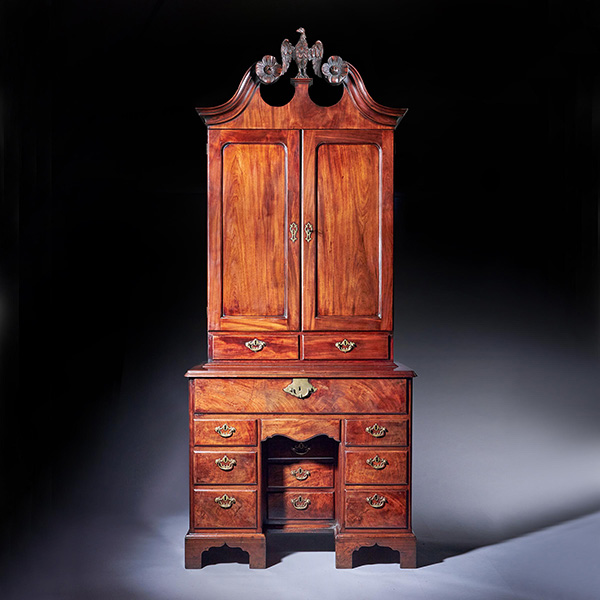
A George II Irish Mahogany Secretaire Kneehole Bookcase Att. C. Hearn
A George II Irish Mahogany Secretaire Kneehole Bookcase Att. C. Hearn £45,900Follow UsA George II Irish Mahogany Secretaire Kneehole Bookcase Att. C. Hearn An original and rare two-part George II 18th century Irish architects figured mahogany...

19th Century Grand Tour Micro Mosaic Tablet Depicting Italian Architecture
19th Century Grand Tour Micro Mosaic Tablet Depicting Italian Architecture £3,650Follow Us19th Century Grand Tour Micro Mosaic Tablet Depicting Italian Architecture A fine mid-19th century serpentine grand tour micro mosaic tablet or...

Large William and Mary 17th Century Inlaid Olive Oyster Lace Box, Circa 1690
Large William and Mary 17th Century Inlaid Olive Oyster Lace Box £5,500[wpforms_selector form_id="11387" show_title="on" _builder_version="4.22.1" _module_preset="default" custom_margin="-30px||||false|false" global_colors_info="{}"...

Early 19th Century High Regency Brass Snake Doorstop
Early 19th Century High Regency Brass Snake Doorstop £1,100Follow UsEarly 19th Century High Regency Brass Snake Doorstop A high Regency solid brass bell-shaped doorstop with snake handle, from the reign of George IV, Circa 1770. England The...

Extremely Rare George III 18th Century Quarter-Striking Bracket Clock, Signed
Extremely Rare George III 18th Century Quarter-Striking Bracket Clock, Signed Follow UsExtremely Rare George III 18th Century Quarter-Striking Bracket Clock, Signed An extremely rare George III 18th century ebonized quarter-striking bracket...

18th Century George III Carved Mahogany Serpentine Concertina Action Card Table
18th Century George III Carved Mahogany Serpentine Concertina Action Card Table £19,800Follow Us18th Century George III Carved Mahogany Serpentine Concertina Action Card Table A bold and impressive George III carved mahogany serpentine...

A George II Irish Mahogany Secretaire Kneehole Bookcase Att. C. Hearn
A George II Irish Mahogany Secretaire Kneehole Bookcase Att. C. Hearn £45,900Follow UsA George II Irish Mahogany Secretaire Kneehole Bookcase Att. C. Hearn An original and rare two-part George II 18th century Irish architects figured mahogany...
